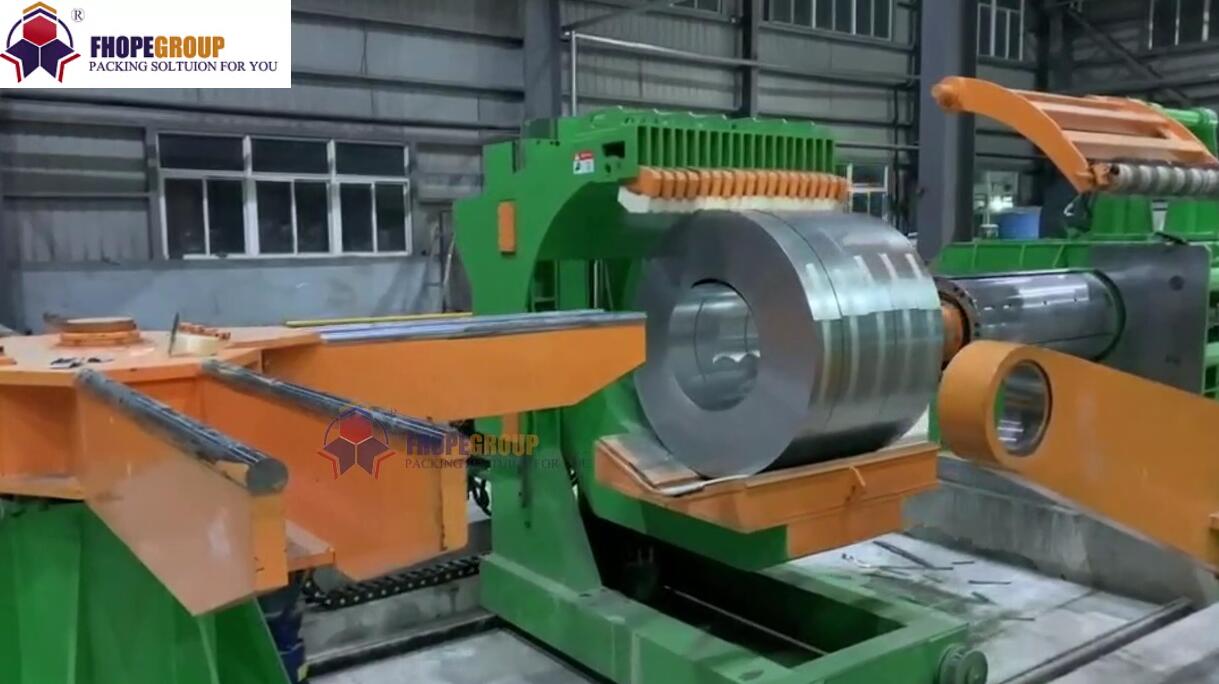Streamlining Coil Handling: The Engineering and Application of Coil Cars in Automatic Slitting Lines
In the demanding environment of modern metal processing, particularly within high-volume slitting operations, the efficient and safe handling of heavy steel coils is paramount. Manual or semi-automated methods often introduce bottlenecks, potential product damage, and significant safety risks. Enter the coil car: a specialized, robust piece of material handling equipment engineered specifically to bridge the gap between coil storage, slitting lines, and downstream processes like automatic packaging.
Understanding the Coil Car: Design and Functionality
A coil car is fundamentally a motorized transport vehicle designed for the precise pick-up, secure transport, and accurate placement of steel or other metal coils. Its design reflects the demanding nature of its task:
- Robust Construction: Typically fabricated from heavy-gauge steel plate and structural sections to withstand immense static and dynamic loads imposed by coils often weighing from 5 to over 50 tons.
- Drive Systems: Powered primarily by either:
- Hydraulic Systems: Offering high power density and robustness, suitable for very heavy loads and demanding industrial environments.
- Electric Motor Drives: Providing precise control, smoother acceleration/deceleration, lower noise levels, and often requiring less maintenance. Variable Frequency Drives (VFDs) are commonly used for optimal speed and torque control.
- Platform Design: Usually features a V-shaped saddle or cradle to securely center and support the coil, preventing rolling or shifting during transit. Some designs incorporate powered lifting mechanisms (e.g., integrated scissor lifts) to adjust height for seamless transfer to uncoiler mandrels or payoff reels.
- Guidance and Movement: Most commonly runs on fixed rails embedded in or mounted on the factory floor, ensuring precise alignment with processing machinery. Pit-mounted designs lower the car's profile, facilitating floor-level operations.
Operational Advantages Over Traditional Methods
Compared to conventional coil handling methods like overhead cranes with C-hooks or forklifts with coil rams, dedicated coil cars offer distinct advantages crucial for automated lines:

- Enhanced Precision and Reduced Damage: The guided rail system and specialized platform ensure controlled movement, minimizing the risk of coil edge damage, denting, or telescoping commonly associated with less precise handling methods. Patent literature often highlights advancements in saddle designs (e.g., US Patent 5,123,801) focusing on secure and damage-free coil support during transit.
- Improved Safety: Automating the transfer process significantly reduces personnel exposure to suspended loads and the hazards of maneuvering heavy coils in tight spaces. Integrated safety features are standard, including:
- Limit switches to prevent over-travel.
- Photoelectric sensors or laser scanners for obstacle detection.
- Emergency stop buttons readily accessible.
- Interlocking controls that prevent movement unless safety conditions are met (e.g., machine guards closed, downstream equipment ready). Research published in journals like the International Journal of Production Research consistently links automation in material handling to reduced workplace accidents.
- Increased Throughput and Efficiency: Coil cars enable faster, more consistent coil exchanges compared to manual or crane-dependent processes. This minimizes downtime on the slitting line, directly contributing to higher overall equipment effectiveness (OEE). Cycle times are predictable and can be optimized within the automated workflow.
- Seamless Integration: Modern coil cars are designed for integration into larger automated systems. They typically interface with Programmable Logic Controllers (PLCs) managing the slitting or steel coil packing lines. This allows for synchronized operations, where the coil car automatically fetches and delivers the next coil based on signals from the main line controller, often communicating via industrial networks like Ethernet/IP or Profibus.
The Coil Car's Role in Automated Slitting and Packaging
The integration of a coil car is often a cornerstone of fully automating a coil processing line. Its function extends beyond simple transport:
- Receiving Coils: Picks up slit coils (or master coils for slitting) from turnstiles, recoilers, or designated buffer zones.
- Transport: Moves coils efficiently along a predetermined path to the next station.
- Positioning: Accurately places coils onto downstream equipment, such as packaging lines, banding stations, weigh stations, or tilting devices, often utilizing its lifting capability for precise vertical alignment.
This automated flow, as documented in industry publications like The Fabricator, eliminates manual intervention points, streamlines the material flow, and ensures coils are presented correctly for subsequent operations, contributing significantly to the overall efficiency and reliability of the entire line.
Future Trends and Conclusion
Advancements continue to refine coil car technology. Trends include the integration of more sophisticated sensor technology for enhanced diagnostics and collision avoidance, potential for wireless controls, and data logging capabilities for predictive maintenance and performance analysis. While Automated Guided Vehicles (AGVs) are explored for coil transport in some contexts, rail-guided coil cars remain the industry standard for heavy-duty, high-precision applications within fixed processing lines due to their inherent stability and accuracy.
In conclusion, the coil car is far more than just a transporter; it is a critical enabling technology for modern, high-efficiency steel coil slitting and packaging operations. By enhancing safety, reducing product damage, increasing throughput, and enabling seamless automation, coil cars provide a significant return on investment and are indispensable components in competitive metal fabrication and processing facilities worldwide.

